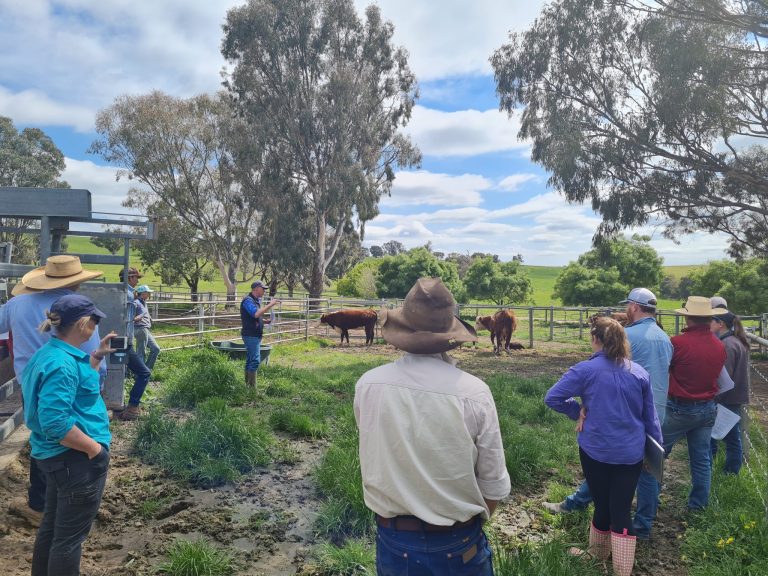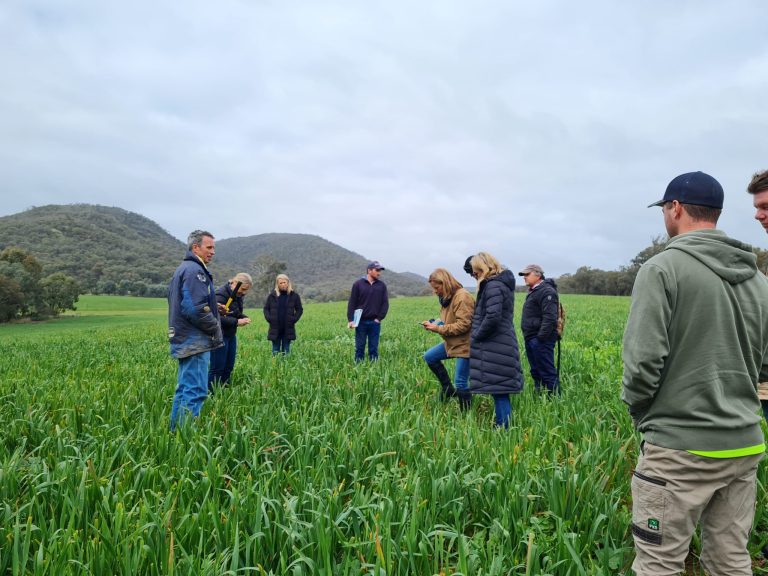Adaptive Farming Systems
As we know, agriculture is a dynamic, diverse and ever evolving industry. It’s also one of Australia’s most exposed industries to risks posed by climate change, changing expectations from consumers and large fluctuations in input and commodity prices, which all impact on its current and long term financial and ecological viability.
Climate variability and unpredictable weather patterns are challenging the ‘norms’ of farming in our area, and land managers are looking for ways to understand the conflicting information available on how significant changes in climate will impact their businesses and management models, the possible effect on how best to manage their soil, water, vegetation and biodiversity to meet industry goals and changing community expectations.
The Adaptive Farming Systems project funded by the Australian Government National Landcare Program provided a great opportunity for farmers to reflect on their management strategies for their production system including for meeting production goals, adapting to changing climate, dealing with severe weather events and maintaining the health of their soils and natural assets to continue to support that system.
What did we do?
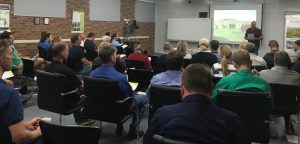

At the beginning of the program we had a forum in Holbrook with speakers that showcased the key management themes that are common to all farming systems.
Brian Cumming shared some interesting statistics on the decline in rainfall and grass production over the last 20 years, suggesting the need to adjust carrying capacity, rotational graze and maintain groundcover. Brian also delved into genetics, specifically breeding for growth. Tailoring calving times to coincide with optimal pasture growth rates and being flexible with weaning times can also help businesses manage climatic variability

Dr Susan Orgill gave an engaging presentation detailing the role of soil organic carbon, its benefit to production and what it means for soil health.
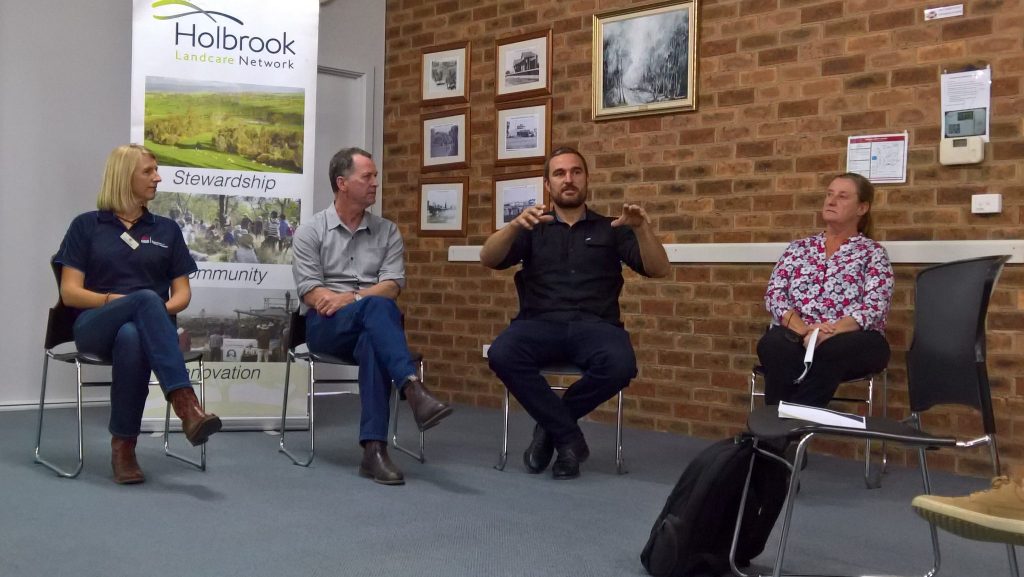
Grant Sims, President of Vic No Till, shared his story of farming, with key points being – to eliminate or use minimum till farming, keep the soil covered, divide paddocks and rotate livestock, minimise use of chemicals & synthetics, stop compaction and use livestock to increase plant growth rates. His effective use of multiple species plantings in both grazing and cropping systems sparked interest of participants.
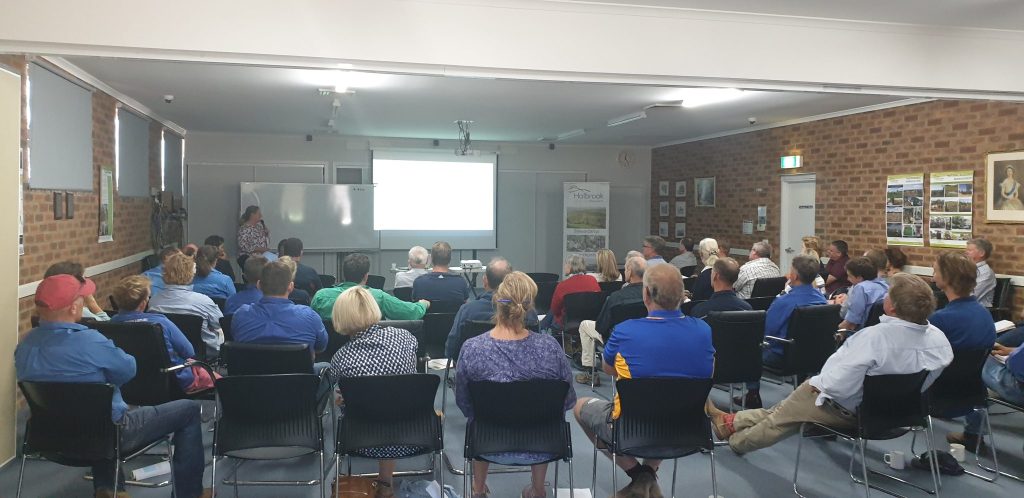
Fiona Conroy, a southern Victorian beef producer shared her business management strategies which optimized production while balancing ecological outcomes. Fiona is keen to spread the message that although agriculture is seen to be big carbon emitters, its actually one of the only industries that can offset carbon and improve soil degradation.
Farmer Case Studies
All farmers manage – soils, pasture/crops and livestock and there are many different models to do that successfully that fit the family, the business and the landscape you farm in.
Here we are showcasing a few different farming system models and hopefully this will help people think about their own goals and landscape, and give some ideas about management for goals of financial and environmental resilience.
The project features 4 local businesses who share their stories
Dalriada
– Brian Burgess
– Primarily Seed stock enterprise also with beef and lamb production
– Seed stock enterprise with annual sales, cattle and sheep on a rotation and young seed stock in confinement.
Jergyle
– Jono, Francine and Fergus Hassall
– Family farm with multiple, geographically spread holdings
– Forward sell steers to grass fed market in Tas, reduce GHGE by selling early
Keogh Ag, Wyola
– Adrian and Ged Keogh
– Large family enterprise
-Predominately sheep – wool and lamb producers
– Focus on pasture management, has good genetics and focus on simplicity and flexibility.
Wybalena
– Andrew & Daniel Mathie
– Livestock are grown out on pasture and finished in containment, this gives more control on point of sale
What did we learn?
Across the range of farming systems there were some common themes, which are interrelated:
How are farmers addressing their business sustainability?
The common issues with business sustainability were the cost of inputs and protecting the pasture base. There were a range of strategies being employed – “Dalriada” has changed their model to a low synthetic input system with a focus on building soil health to address soil fertility and resilience in a natural way. Use of containment areas to protect pastures at vulnerable times of the year was common to the other three – which means less frequent resowing and lower input costs. This prolongs the life of sown pastures and improves their response to the Autumn break and longevity of production in the Spring.
Succession was a major issue for three of our farmers, with the younger generation coming back on farms and into the businesses happening now. Land acquisition and expansion was a strategy that two of them used, the other enterprise focused more on improving on-farm efficiency.
How are farmers addressing their environmental sustainability?
Common to all farms was a strategy to ensure the maintenance of ground cover. Groundcover level is fundamental for a lot of our themes – pasture productivity, prevention of erosion and resilience to climate variability. For most of the producers it was the implementation of…
All four of the farms have undertaken revegetation on farm for environmental and livestock protection reasons.
What adaptations to climate variability are happening on farm?
It was clear that our farmers are actively adapting their management to the seasonal variability that is predicted to be exacerbated by climate change. The implementation of stock containment strategy was a common response. During the period of the project, the issue of agriculture and emissions has really come to the fore, and at least one of the properties is looking to move towards a net zero target.
What does the future of farming look like for you?
Dalriada
“Healthier for all living things at Dalriada. Reduce the need for outlay for agronomists!”
Keogh Ag
“Great at the moment, very profitable and we are able to take opportunities if they fit with our long term goals. Good times at the moment which enables flexibility. However, we know that the next drought is just around the corner, and we have to plan for this.”
Jergyle
“Succession planning earlier than in my case (Jono), expand where there is opportunity and continue farming well into the future”
Wybalena
“In farming for the long haul, we want the family to continue to farm, succession planning is in place to support this.”
We see a lot of discussion and debate about “regenerative” farming versus “traditional” farming. HLN doesn’t endorse any particular farming system but aims to work with all producers to better understand the system they choose to run and make it meet their farming and lifestyle goals.
Themes emerging from this project – where to from here?
Environmental Accounting – the rise of carbon and biodiversity ‘credit’ markets raised a lot of questions about the role of this in future farming landscape. In response to interest, we ran an ‘Environmental Accounting 101” workshop to help farmers understand the landscape.
This has now turned into a two-year “Landcare Farming” project through Landcare Australia. You can learn more about this project here.
Role of multispecies plantings in soil health and production – after the interest generated from Grant Sims talk at the Forum we ran another webinar to expand on this. Improving soil health with a focus on plants – an interview with Grant Sims and Declan McDonald.
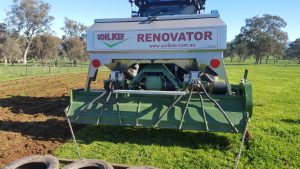
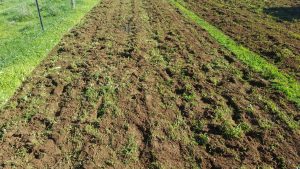

This project also generated a lot of interest about soil quality in the region. Currently, HLN is conducting another project looking at soil quality, particularly from a soil ecosystems perspective. Find out more about what we are doing in this space here.
At the beginning of the project we had the opportunity for a demonstration of the Soil-Kee renovator at a local farm. An information day was held in 2019. The machine aerates the soil and sows multispecies at the same time. Although it has been effective in achieving high soil carbon rates in dairy systems in Gippsland, Vic, the outcome of the discussion that we need trials to see how it can work in our local soils and climate
Importance of managing ground cover was a key message from all the case study farmers and it led to some farmer groups coming together to do Prograze© training. Two groups of 10 have gone through the program which teaches principles of pasture assessment and management, feed budgeting and livestock condition assessment.
